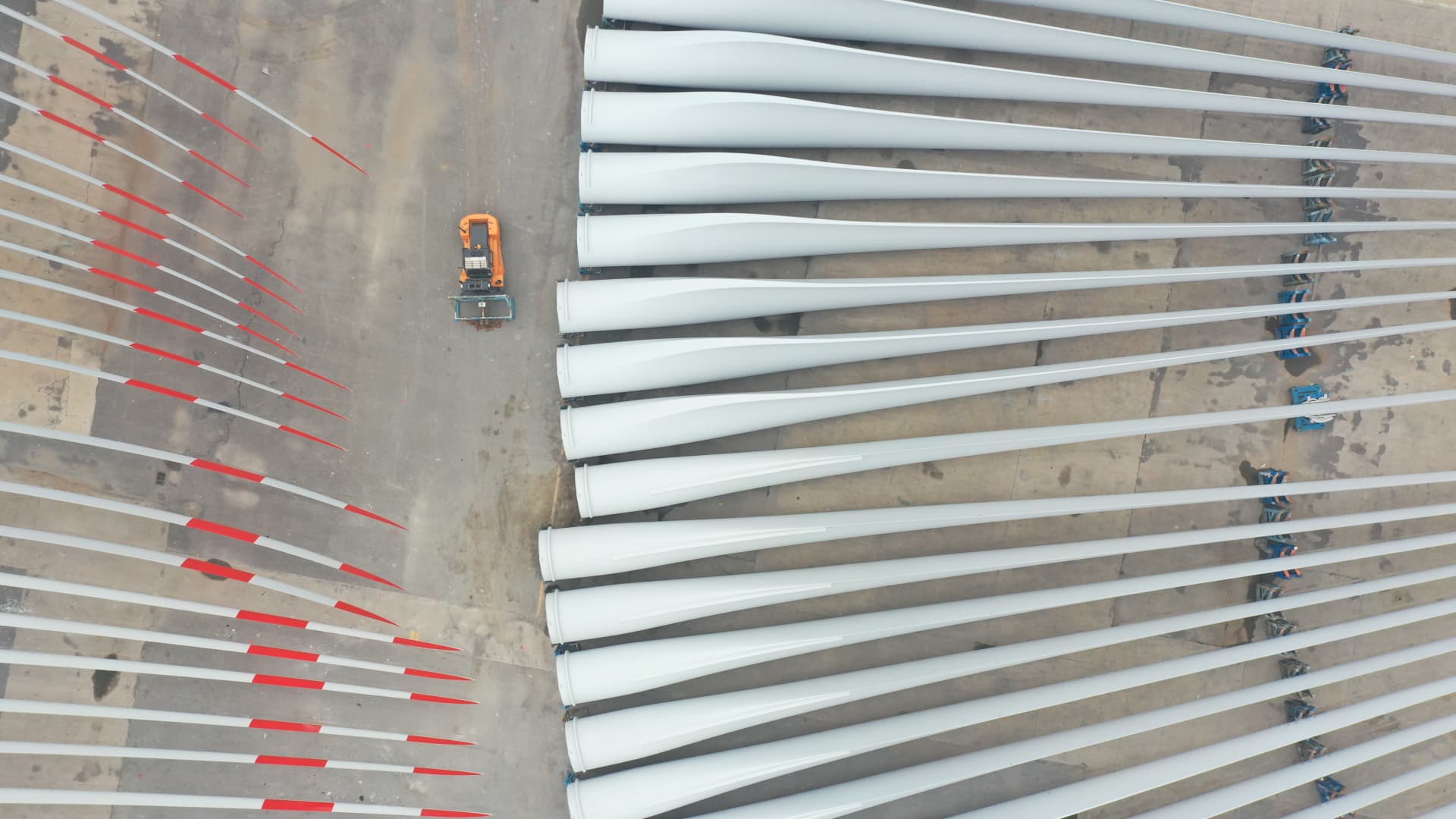The world is moving into “a new age of clean technology manufacturing” that could be worth hundreds of billions of dollars per year by the end of the decade, generating millions of jobs in the process, according to a new report from the International Energy Agency.
Published Thursday morning, the IEA’s Energy Technology Perspectives 2023 report — which referred to “the dawn of a new industrial age” — looked at the manufacturing of technologies including wind turbines, heat pumps, batteries for electric vehicles, solar panels and electrolyzers for hydrogen.
In a statement accompanying its report, the IEA said its analysis showed that “the global market for key mass-manufactured clean energy technologies” would be worth roughly $650 billion per year by 2030, a more than three-fold increase from today’s levels.
There is a caveat to the Paris-based organization’s forecast, in that it’s based on countries around the world implementing, in full, pledges related to energy and the climate — a significant task that will require both political will and financial muscle.
“The related clean energy manufacturing jobs would more than double from 6 million today to nearly 14 million by 2030,” the IEA said, “and further rapid industrial and employment growth is expected in the following decades as transitions progress.”
Despite the above, the IEA noted there were potential headwinds related to supply chains, a long-standing issue that heightened geopolitical tensions and the coronavirus pandemic have thrown into sharp relief in recent years.
Its report highlighted “potentially risky levels of concentration in clean energy supply chains — both for the manufacturing of technologies and the materials on which they rely.”
China, it said, was dominating both the production and trade of “most clean energy technologies.”
When it came to mass-manufactured technologies such as batteries, solar panels, wind, heat pumps and electrolyzers, the IEA said the three biggest producer countries represented “at least 70% of manufacturing capacity for each technology — with China dominant in all of them.”
“Meanwhile, a great deal of the mining for critical minerals is concentrated in a small number of countries,” it added.
“For example, the Democratic Republic of Congo produces over 70% of the world’s cobalt, and just three countries — Australia, Chile and China — account for more than 90% of global lithium production.”
Commenting on the report, IEA Executive Director Fatih Birol said the planet “would benefit from more diversified clean technology supply chains.”
“As we have seen with Europe’s reliance on Russian gas, when you depend too much on one company, one country or one trade route — you risk paying a heavy price if there is disruption,” he added.
This is not the first time Birol has spoken about the geopolitical dimension of the world’s shift to a future centered around lower-carbon technologies.
In October, Birol told CNBC that the main driver of clean energy investment was energy security rather than climate change.
Namechecking the Inflation Reduction Act in the U.S. and other packages in Europe, Japan and China, Birol said a “major increase in clean energy investment, about [a] 50% increase,” was being seen.
“Today it’s about 1.3 trillion U.S. dollars and it will go up to about 2 trillion U.S. dollars,” Birol told CNBC’s Julianna Tatelbaum.
“And as a result, we are going to see clean energy, electric cars, solar, hydrogen, nuclear power, slowly but surely, replacing fossil fuels.”
“And why do governments do that? Because of climate change, because of the greenness of the issues? Not at all. The main reason here is energy security.”
Birol went on to describe energy security as being “the biggest driver of renewable energies.” He also acknowledged the importance of other factors, including those related to the climate.
“Energy security concerns, climate commitments … industrial policies — the three of them coming together is a very powerful combination,” he said.

